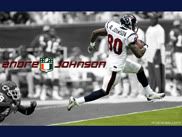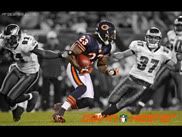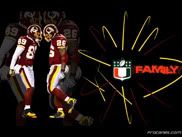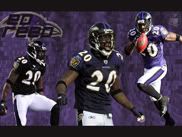CLICK HERE TO ORDER!
LIVING SCARED - A year after Sean Taylor's murder, NFL players still live in fear
Nov/19/08 11:58 PM Filed in: Sean Taylor
| Clinton
Portis

Enjoying a rare weekend off, the NFL's second-leading rusher is on his couch, yawning constantly while watching college football. He's wearing pajama pants, orange footies and a white T-shirt emblazoned with a picture of friend and departed Skins teammate Sean Taylor. Favoring a sore left knee, Portis shuffles across his marble floor to show off the views. To the east, windsurfers ride the glassy waters of the bay. To the west, Miami's skyline. And behind the blinds to the north: another shiny condo tower, where a woman stands on her balcony, peering directly at a startled Portis.
The moment perfectly captures how NFL players feel these days. On Nov. 26, 2007, Taylor was shot by intruders in the bedroom of his Miami home while his girlfriend and 18-month-old daughter hid under the covers. The botched robbery attempt was another horrific chapter of a crime wave against pro athletes, one that's shocked NFL players into a paradigm shift in self-awareness and security. Yet no matter how closely they protect themselves, many still can't shake the feeling that someone is out there, just beyond the blinds, lurking. "I don't think the NFL is gonna ever be the same," says Portis. "As a football player, Sean thrived on instilling fear in people on the field. Then you wake up in the middle of the night, and you hear something rattling around in your house, and in a split second—now the fear is in you."
You can see the impact of Taylor's death in the body language of 315-pound Chiefs rookie Branden Albert as he leaves a club, checking and rechecking his rearview mirror to make sure he isn't being followed. It's in the nervous laughter of Steelers QB Ben Roethlisberger when he recalls the time a weapon was waved in his face. It compels Jaguars running back Fred Taylor to use the car with the less showy factory rims when he goes out at night. It's in the candid conversations Titans center Kevin Mawae says happen in every locker room around the league. And it's in the near whisper of Texans cornerback Dunta Robinson as he talks, for the first time publicly, about his own home invasion.
When asked about their fears, players cite the same frightening flashpoints: New Year's Day 2007, when Broncos defensive back Darrent Williams was shot and killed outside a Denver nightclub while riding in his limo; November 2007, when Taylor was murdered; June 2008, when Oakland receiver Javon Walker was robbed and beaten unconscious near the Vegas strip; and September 2008, when Jaguars lineman Richard Collier was paralyzed and had to have his leg amputated above the knee after he was shot 14 times in what police say was a retaliatory shooting. "We are targets," says Buccaneers corner Ronde Barber. "We need to be aware of that everywhere we go."
Violence against athletes is not new, of course, and not isolated to the NFL. Just last summer in Chicago, NBA players Antoine Walker and Eddy Curry were robbed in their homes. But more than any other league's, the culture of the NFL—the wealth, fame, brutality and air of invincibility—makes its players vulnerable. Broncos security chief Dave Abrams, who was hired full-time shortly after Williams was shot, says the hardest part of his job is convincing players of their own mortality. To excel at such a violent sport, he explains, they must be fearless; they think of themselves as the kind of untouchable warrior who would never require the protection of a bodyguard, an alarm system or even a locked door. The night he was murdered, Sean Taylor had neglected to turn on his home security system, even though his house had been burglarized just nine days earlier.
The NFL is attempting to flip this it-can't-happen-to-me mindset. The league provides a security consultant to each team, and most teams also have their own head of security. At his State of the League address before Super Bowl XLII, commissioner Roger Goodell said that players becoming targets was "a big issue." "We have to do everything we can to educate our players of the simple things they can do to protect themselves" Goodell said.
Portis has gotten the message. Security measures that used to be an afterthought are now part of his daily routine. Alarms that used to go unused are now turned on each night. Doors are dead-bolted. Windows are locked. Others are taking even more drastic steps. Robinson recently became a gun owner. Roethlisberger uses bodyguards for public appearances. Mawae, the NFLPA president, runs background checks on potential babysitters.
Fred Taylor, meanwhile, has equipped his Jacksonville home with every conceivable security apparatus. "I still don't think I have enough," he says. "Who knows what's enough? I wouldn't say I'm safe.
"I don't know what safe is."
(espn.com)








